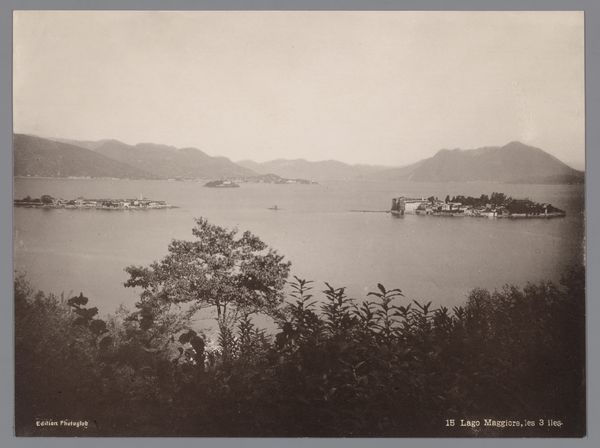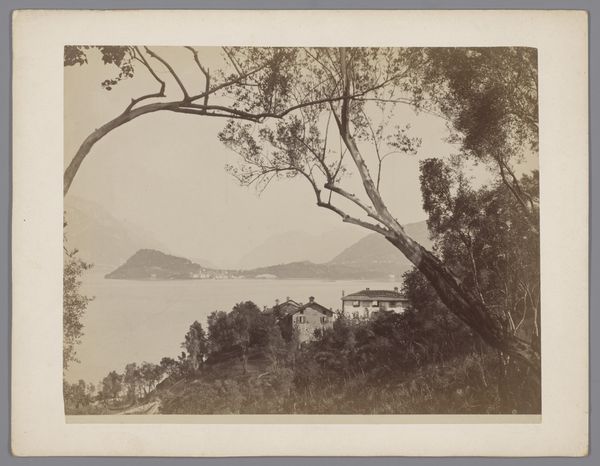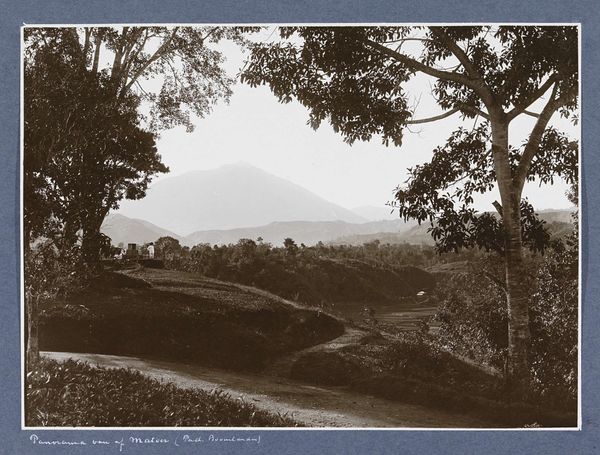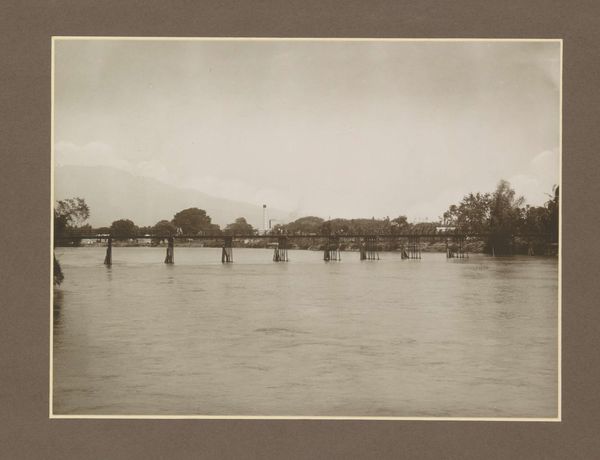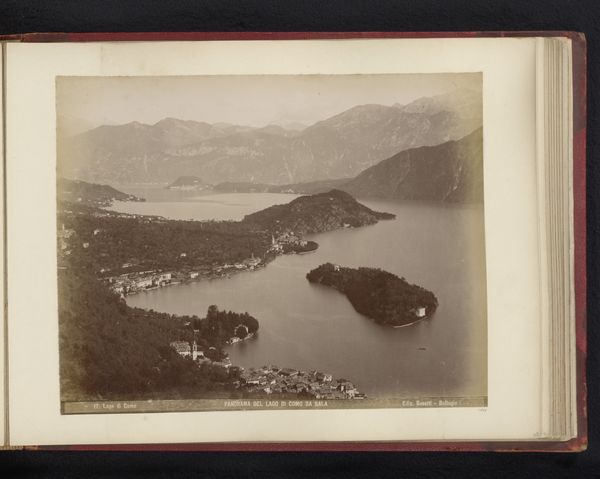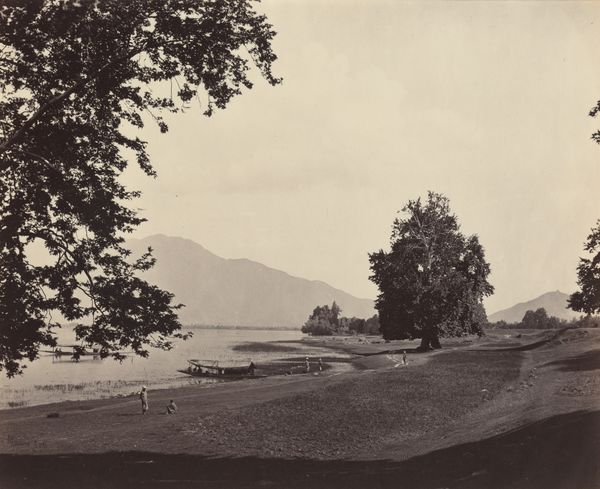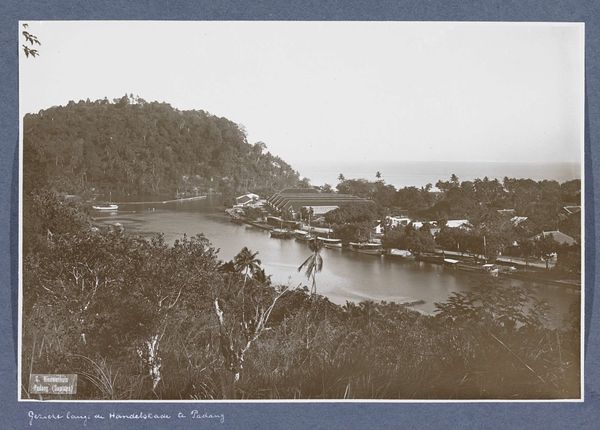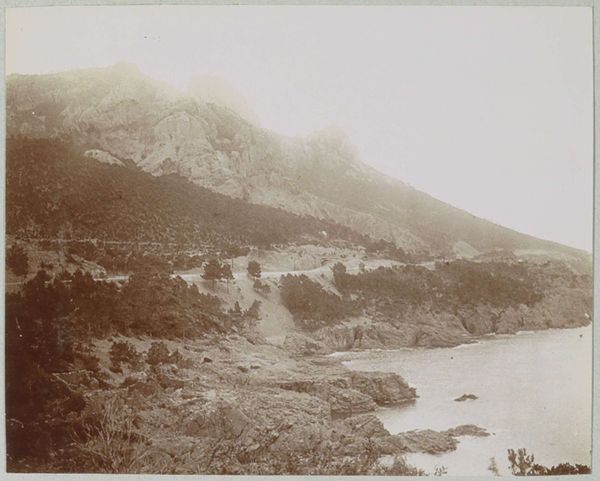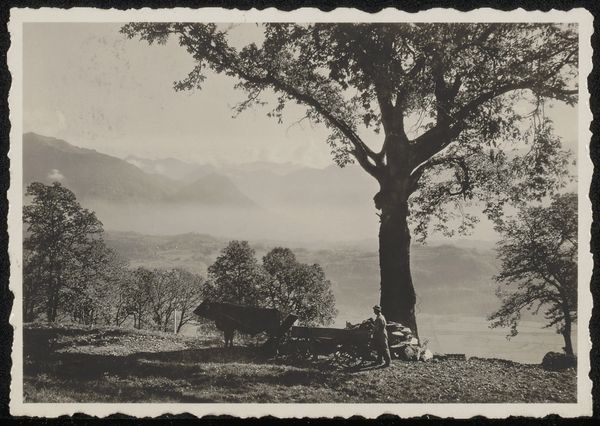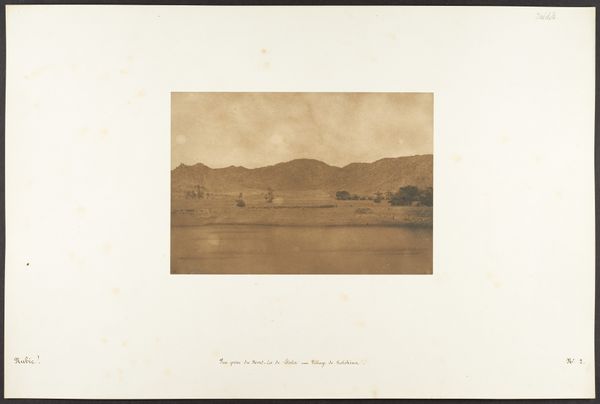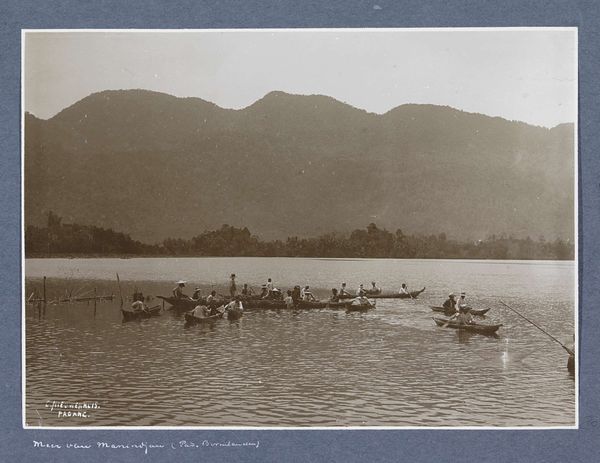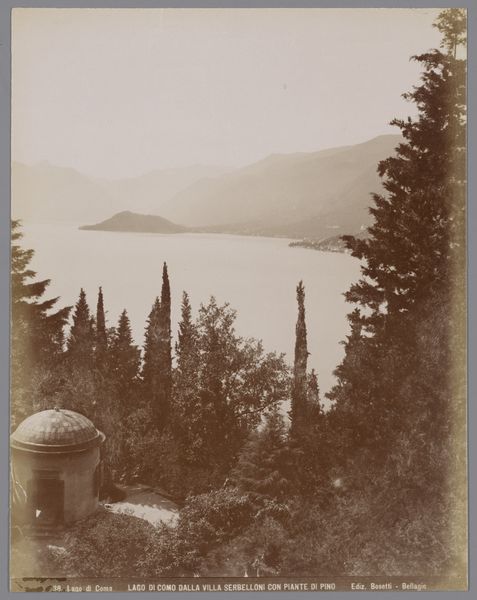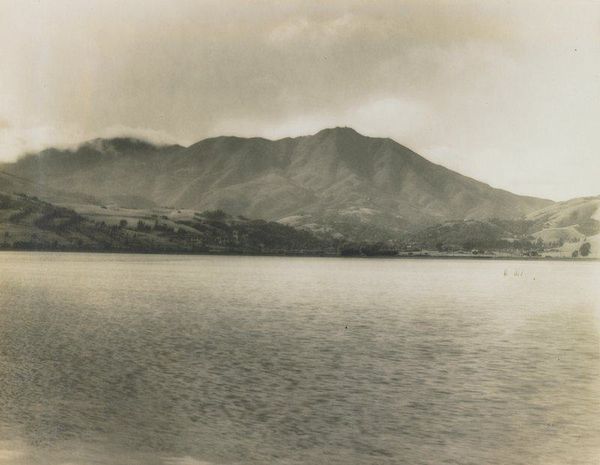
Gezicht op het Meer van Manindjau op Sumatra met op de voorgrond landarbeiders c. 1900 - 1920
0:00
0:00
photography, gelatin-silver-print
#
landscape
#
photography
#
orientalism
#
gelatin-silver-print
#
realism
Dimensions: height 200 mm, width 287 mm
Copyright: Rijks Museum: Open Domain
Curator: Welcome. We're looking at "View of Lake Maninjau in Sumatra with agricultural workers in the foreground," a photograph created circa 1900-1920. The artist is Christiaan Benjamin Nieuwenhuis, and it's a gelatin-silver print. Editor: It's beautiful, though subdued. The monochromatic palette lends it a melancholic air. And that haze over the mountains makes you wonder what kind of labor produced this seemingly tranquil scene. Curator: Precisely. Nieuwenhuis's work provides a glimpse into the colonial gaze. As a landscape, it appears serene, yet it’s crucial to consider its context. The Netherlands, with its colonial history in Indonesia, used imagery like this to shape perceptions. Think about who would have had the means to own this photograph and what their socio-political status would be at the time. Editor: I'm immediately drawn to those agricultural workers. Note the physical labor implied in cultivating that foreground. The choice of gelatin-silver process here isn't neutral either; mass reproducibility meant such images could be circulated widely, impacting viewers across social classes and continents and contributing to certain skewed ideologies of colonization. It creates a demand for resources. Curator: Exactly! The 'realism' so-called of the style is constructed and mediated by power dynamics. This isn’t just a snapshot, but a representation crafted with particular narratives in mind that further perpetuate a Western, global view. Editor: Consider the composition, too. The high vantage point, almost paternalistic view reinforces an order that places some at the bottom rung of the socio-economic structure and in this landscape. What tools did they have? What were they growing? I bet those raw materials eventually end up far removed from this place! Curator: The photograph prompts us to reflect on the relationships between labor, representation, and the colonial project itself. It makes us think about what is revealed and, perhaps more importantly, what is obscured. Editor: Right. It’s about peeling back those layers of idyllic landscape to uncover the means of production—the hidden histories etched into every tree, every crop, every shadow in that gelatin silver. I’ll certainly be thinking about Sumatra long after this visit.
Comments
No comments
Be the first to comment and join the conversation on the ultimate creative platform.
